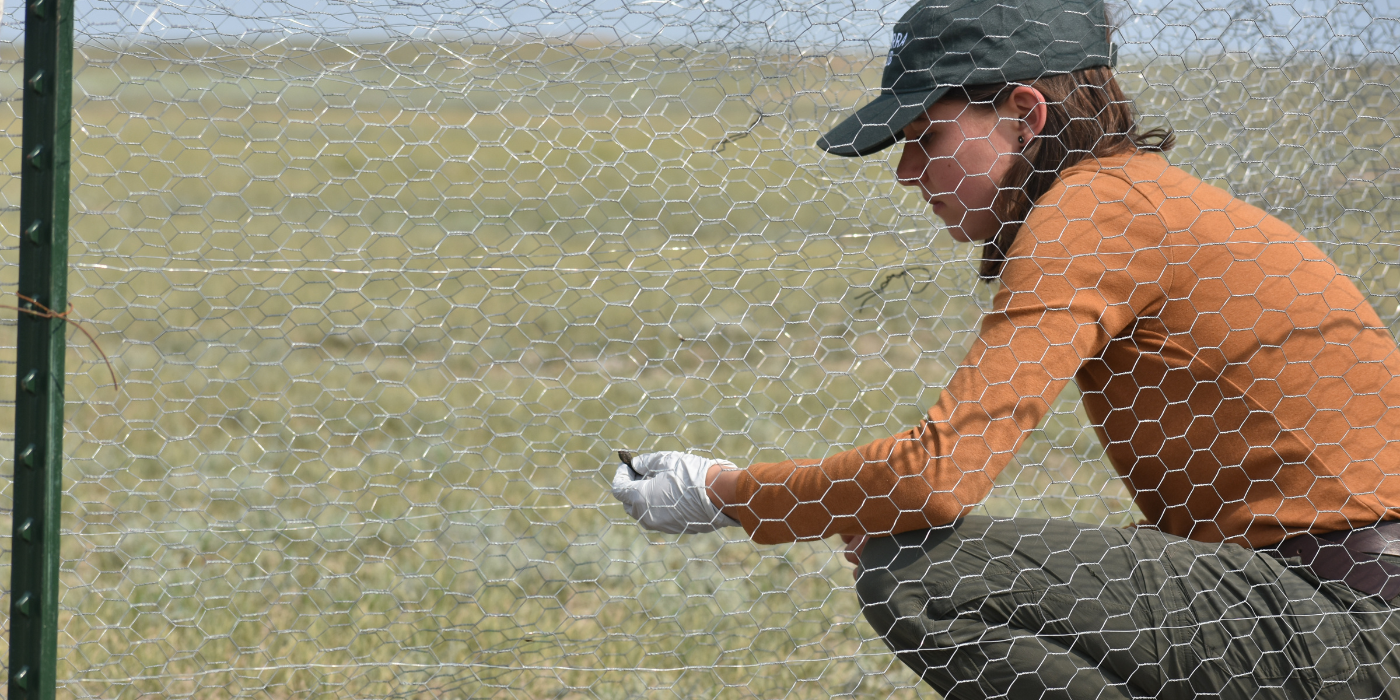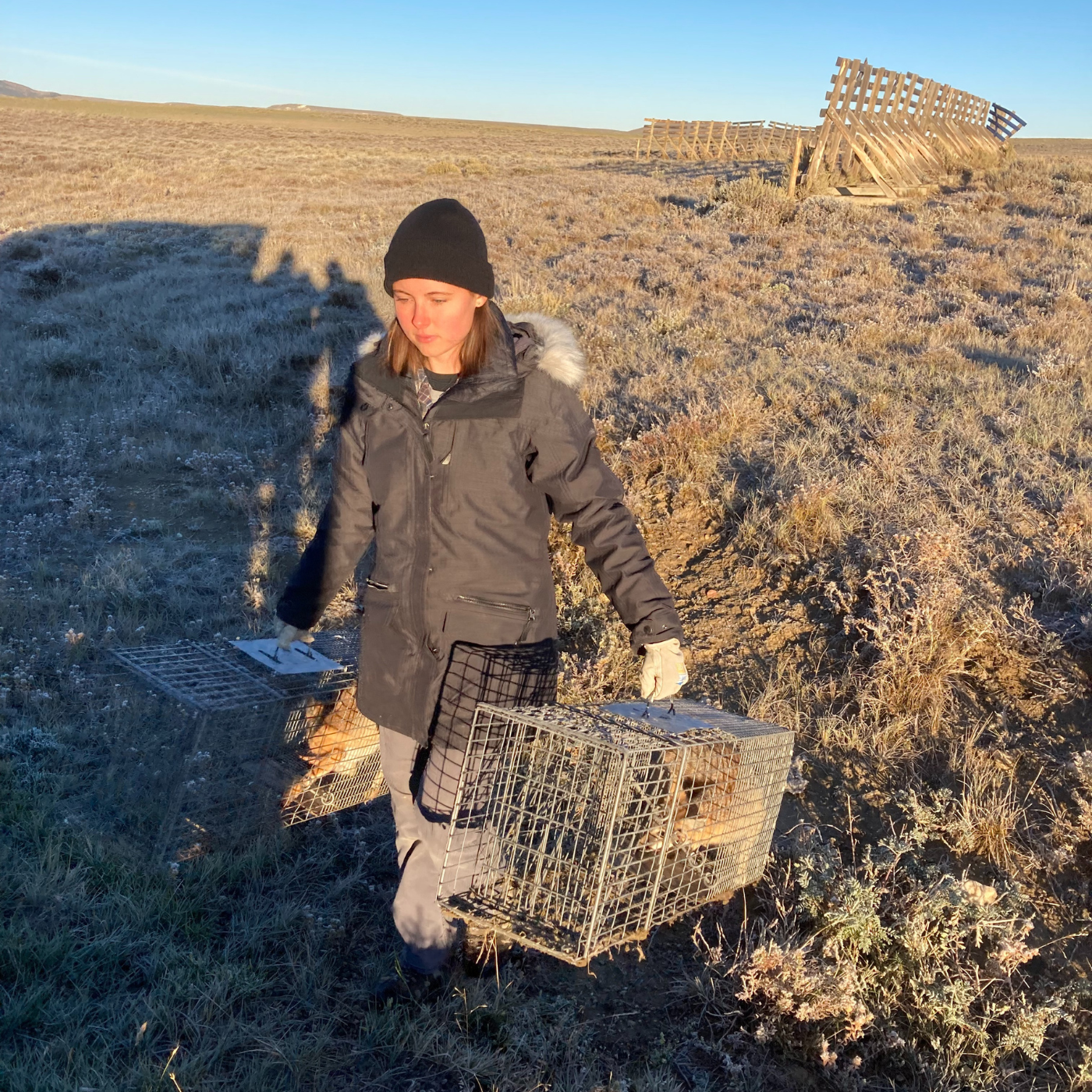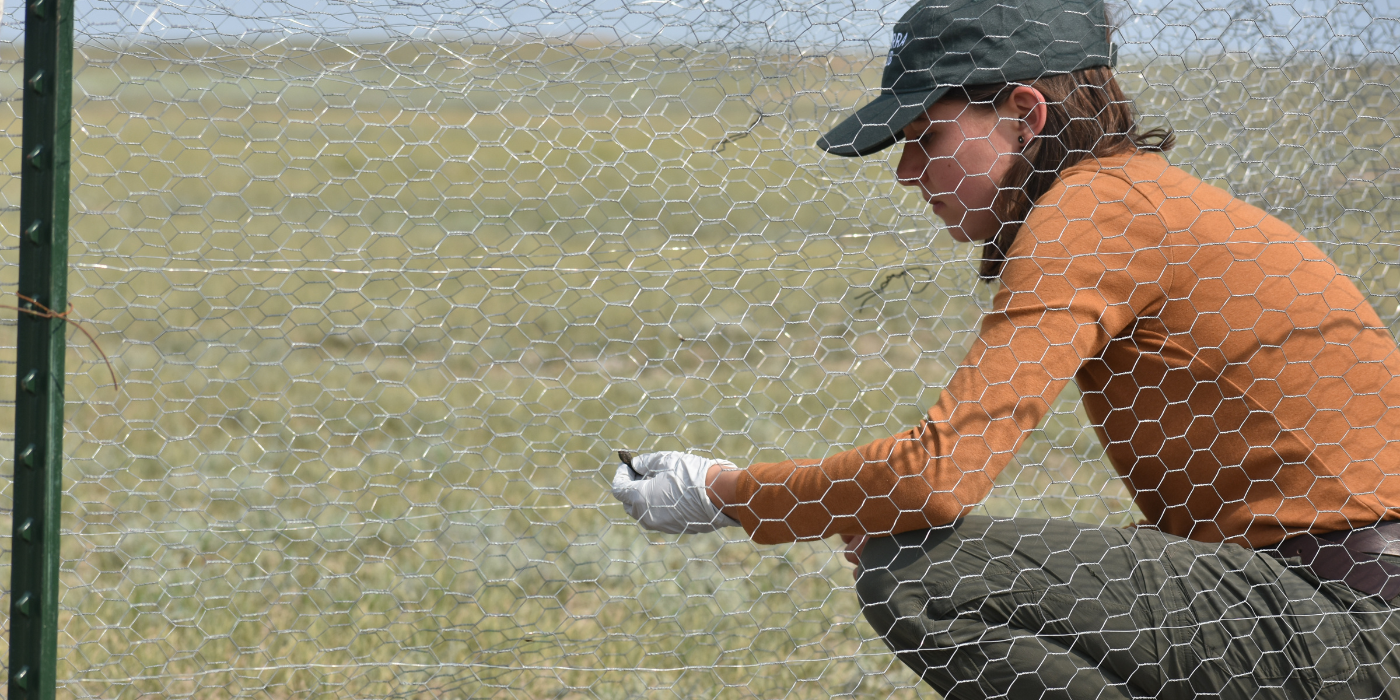Focus on the Future: Kimberly Todd

Focus on the Future is a series that seeks to highlight the early career scientists who conduct research at the Smithsonian's National Zoo and Conservation Biology Institute. Learn about undergraduate, graduate and post-doctoral fellows and the conservation research they are supporting through first-hand accounts and stories.
Featured photos provided by Kimberly Todd.
Kimberly Todd
George Mason University MSc Student
Smithsonian’s National Zoo and Conservation Biology Institute Fellow
I have always had an interest in nature and wildlife. I’m from the Charlotte, North Carolina area originally, and worked a lot with animals growing up, including horses. I was very fortunate because my family would travel every summer around the United States, going to national and state parks which further cemented my interest in wilderness areas.
I studied biology at Appalachian State University in Boone, North Carolina with a concentration in ecology, evolution and environmental biology. Faculty members at App State helped introduce me to scientists at the Smithsonian and I eventually got referred to my current advisors, Nucharin Songsasen, Ph.D., and Hila Shamon, Ph.D. They were the ones who got me involved with the internship program in the Great Plains region.

Kimberly carries two swift foxes trapped in Shirley Basin, Wyoming. They would later be reintroduced at Fort Belknap in Montana.
Through this work, the Smithsonian has also developed a close relationship with the Aaniiih Nakoda College (ANC) at Fort Belknap, and co-developed pathways for students to join research activities. I had the opportunity to work alongside ANC students last summer every single day for long hours to monitor a species culturally a part of their community.
Currently, I’m a master's student at George Mason University pursuing a degree in environmental science and policy, with a concentration in conservation science and policy. I am involved with the ongoing swift fox reintroduction program at the Fort Belknap Indian Reservation in north central Montana. I’ve wrapped up my fieldwork now, but for the past three years, I spent about four months out of the year in Colorado, Wyoming and Montana.
The Fort Belknap swift fox reintroduction is a five-year program initiated in 2018, where translocations started in 2020. I helped with the first translocations as an intern. Now as a graduate research fellow on the project, I am looking at the personality traits of these foxes, their hormone profiles and how these interact to influence survival and other measures of reintroduction success.
This project is part of a bigger story, where the Fort Belknap Indian Community is working with partners to re-establish this species which has been absent from the region for over 50 years. The Fort Belknap Indian Community has put forth efforts to rewild these lands by bringing back native species such as the buffalo (American bison), the endangered black-footed ferret and now the swift fox.

As part of the reintroduction program at the Fort Belknap Indian Reservation, the team used soft-release pens to hold the foxes for a few days before their release. Kim and the other researchers used these pens to test their theory that soft-releases could increase the foxes chances of survival. Above, Kim collects a scat sample from a pen to analyze the fox's stress and thyroid hormone levels.
What I love about this project is it is a hopeful, collaborative and positive story. Conservation is so often limited to this doom and gloom narrative of “everything's going to chaos.” It perpetuates this sense of hopelessness and people become complacent. They're like, "I can't do anything about this. So why bother?” I want to change that narrative. It’s important to rethink conservation in a way that’s more positive, so people will be motivated to combat issues like climate change and species loss. The conservation narrative is one that's co-authored by people and wildlife. You can't have one without the other. They're irrevocably intertwined.
I’m personally very proud of where I’ve come, because when it comes to places like Appalachian State University, many folks might not know where that is beyond its proximity to the Blue Ridge Parkway. For aspiring conservation professionals coming from less privileged backgrounds or less well-known schools, my advice is to network as much as you can. Build those bridges. Take those chances, no matter what. The worst thing that can happen is it doesn’t work out and you reach for the next chance. You might be in Boone today and chasing foxes in the plains of Montana tomorrow.